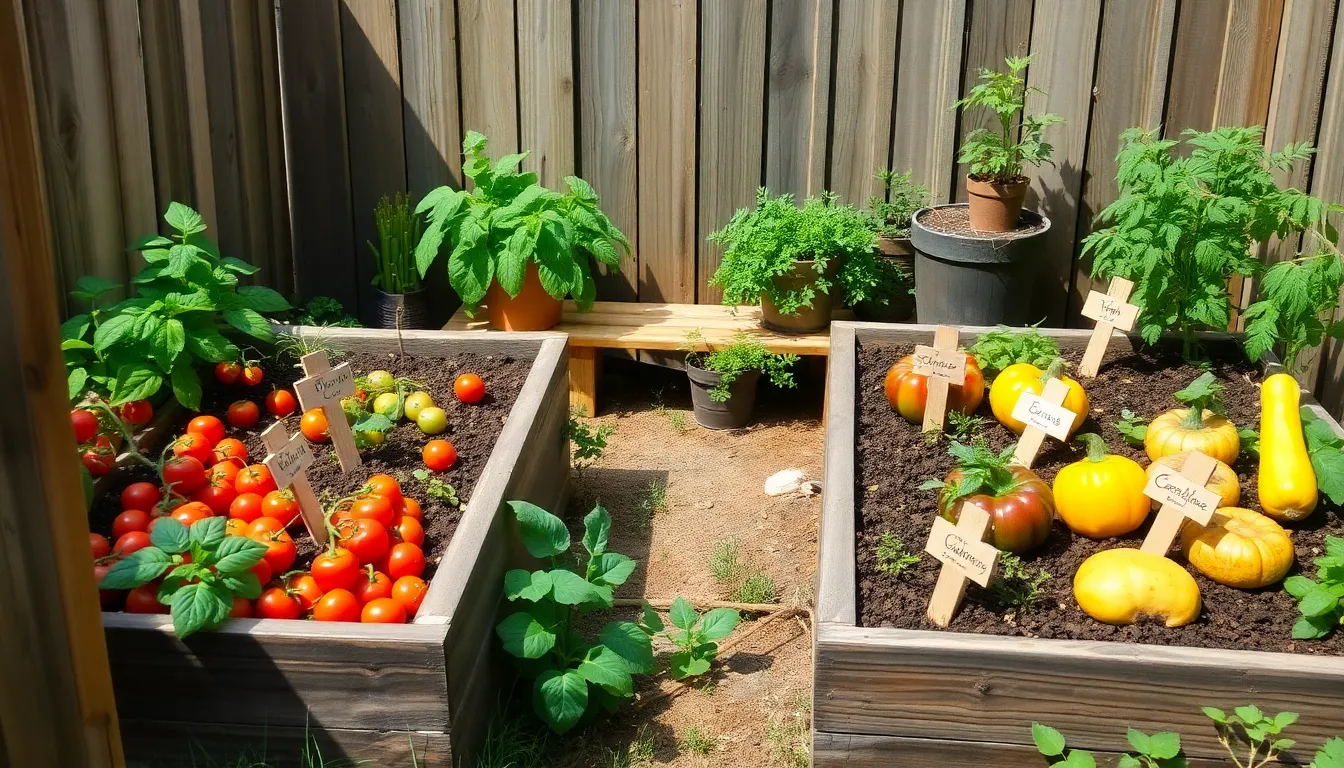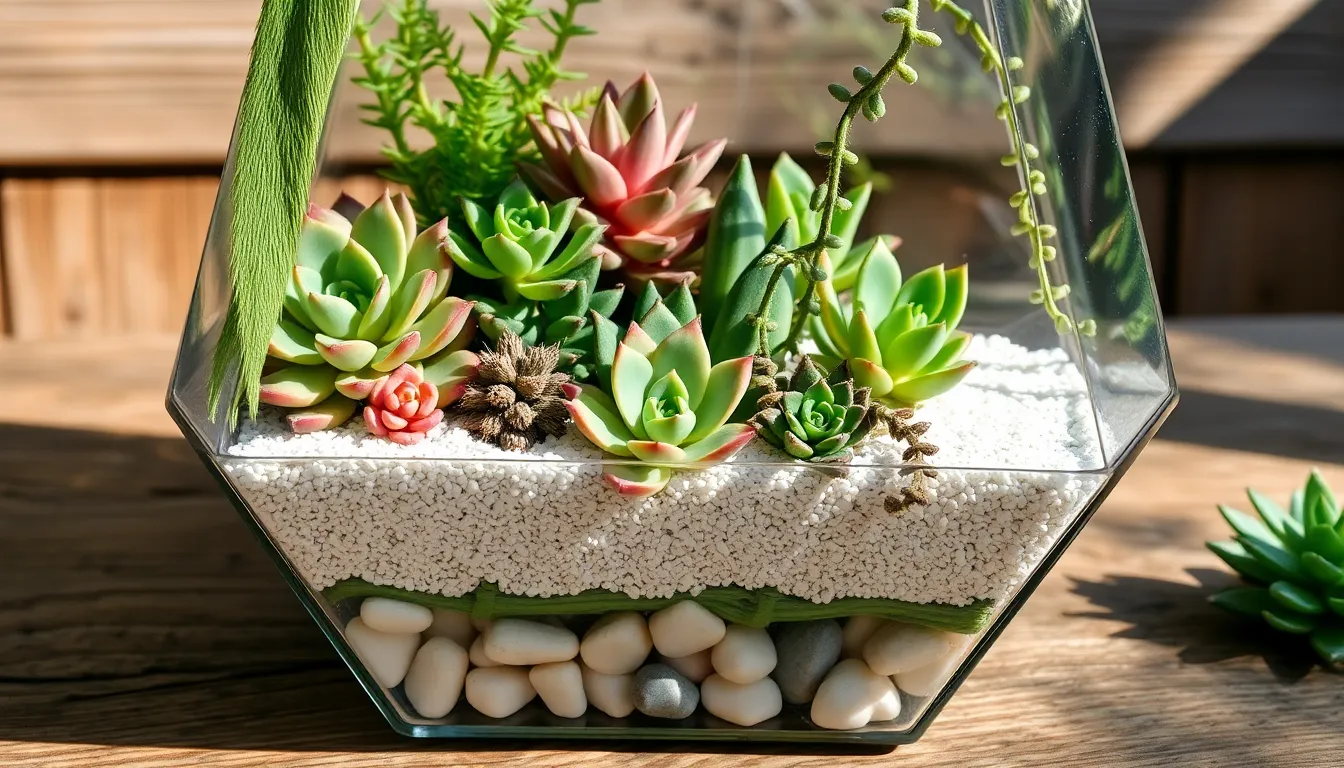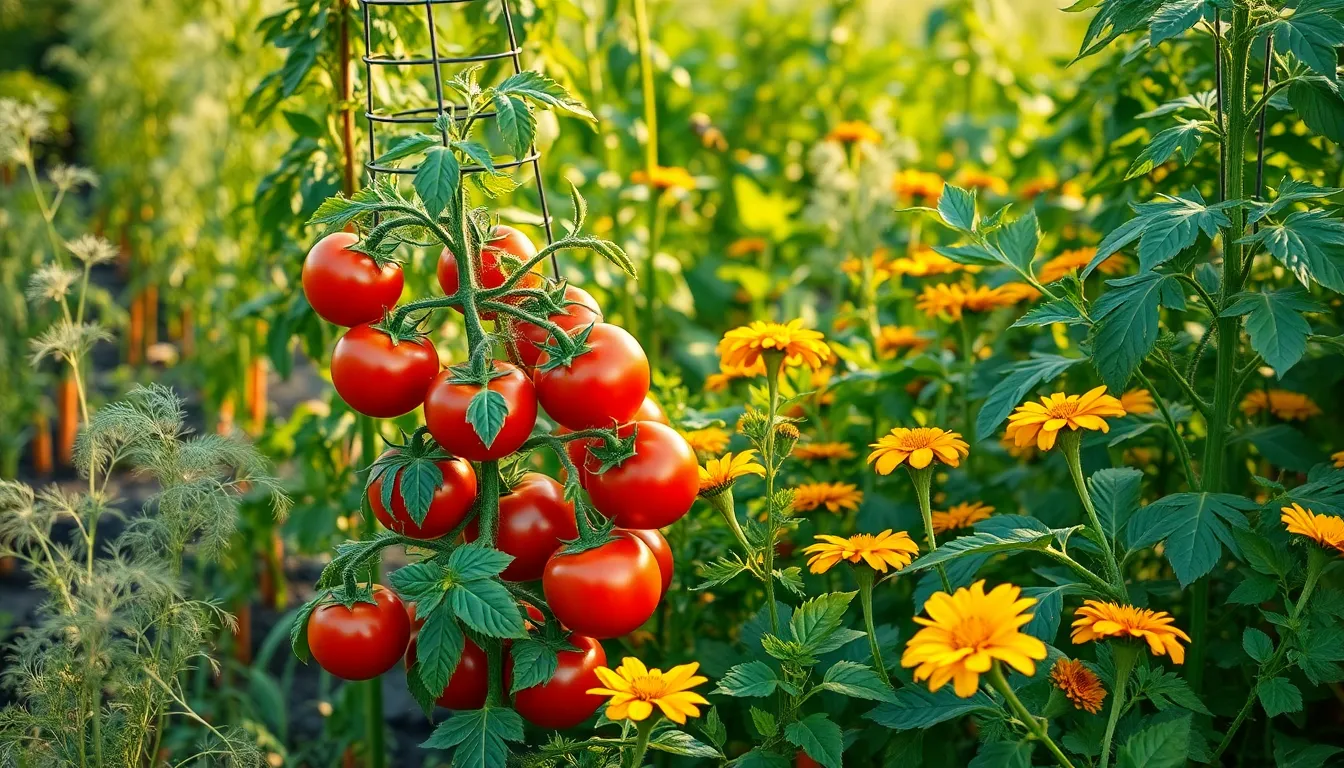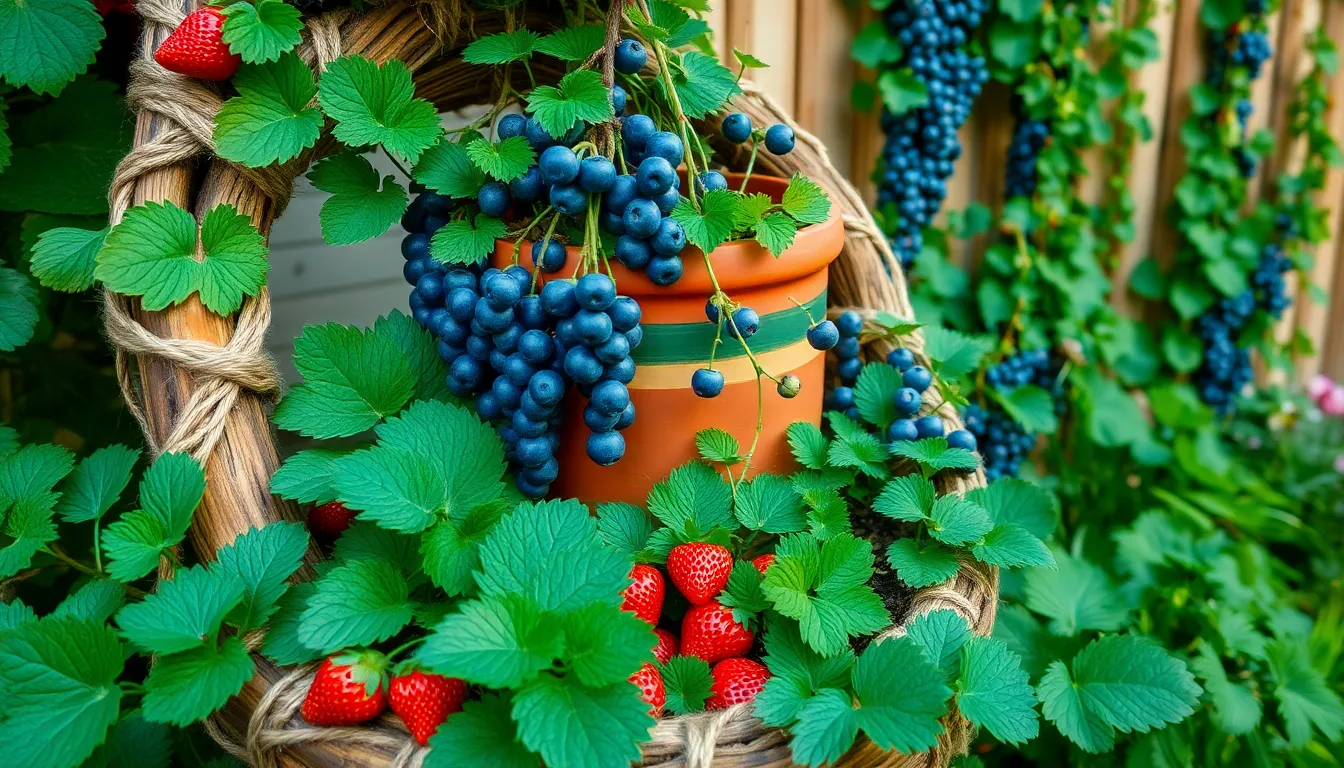Gardening is a delightful journey that invites both beginners and seasoned green thumbs to cultivate not just plants, but joy and a sense of accomplishment. With “11 Low-Maintenance Vegetable Garden Ideas,” we present a treasure trove of strategies designed to fit seamlessly into your lifestyle, promising bountiful harvests without the hassle.
Whether you’re just starting out or have years of experience, these ideas demystify the path to a thriving garden that practically takes care of itself. By embracing these techniques, you’ll discover the practical benefits of less weeding, reduced watering, and more time to savor the vibrant rewards of your labor.
Dive into this guide with confidence, knowing that each tip is crafted to enhance your gardening success and satisfaction. You’ll soon see that with a little planning and the right approach, a lush, productive vegetable garden is within everyone’s reach.
Opt for Raised Garden Beds
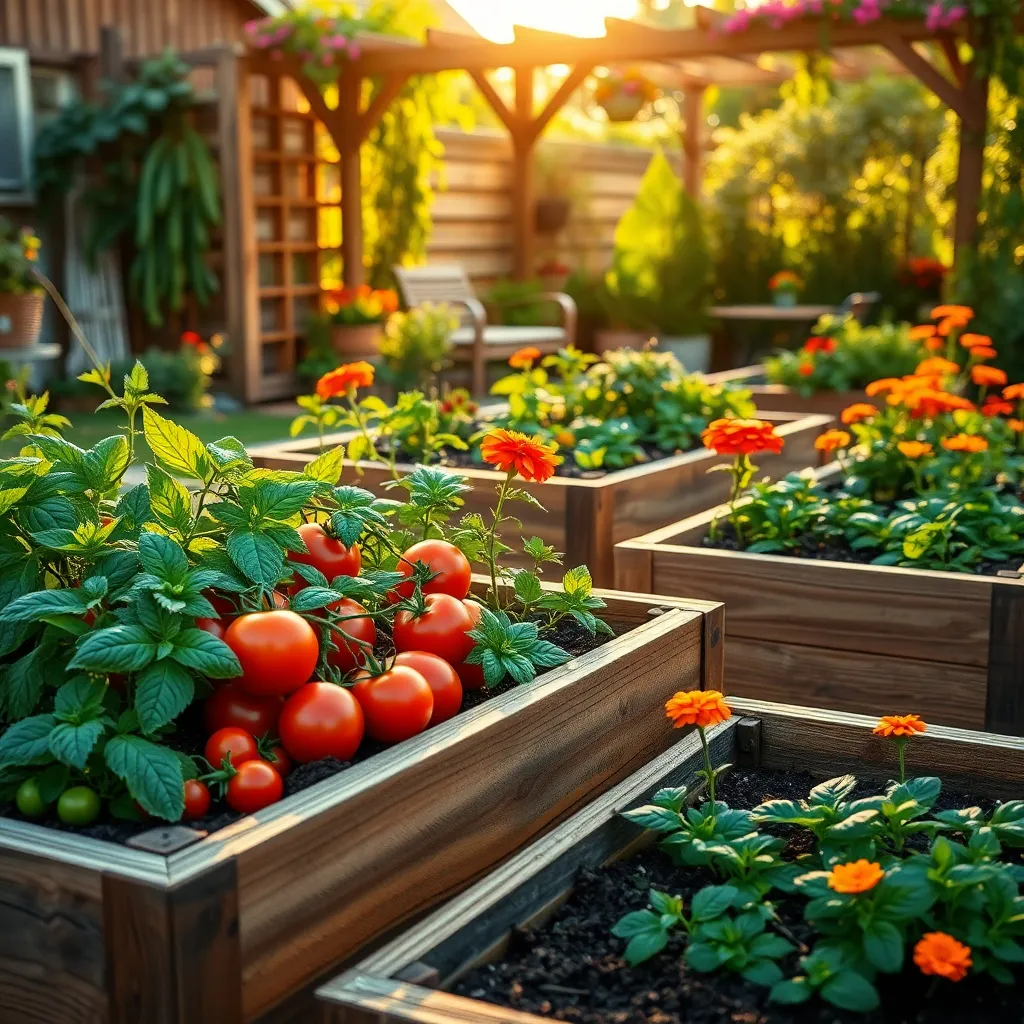
Raised garden beds are an excellent choice for a low-maintenance vegetable garden, offering better control over soil quality. By elevating the growing area, you can ensure optimal drainage and prevent waterlogging, a common issue in traditional in-ground gardening.
When building raised beds, consider using materials like untreated wood, stones, or bricks, ensuring durability and environmental safety. The ideal height for a raised bed is between 12 to 24 inches, which provides ample soil depth for root development while minimizing the need to bend over when tending to plants.
For beginners, start by filling your raised beds with a mix of quality topsoil and compost to provide essential nutrients for plant growth. This rich soil mixture not only encourages healthy plant development but also reduces the frequency of fertilization, making it easier to maintain.
Advanced gardeners can experiment with creating specific soil blends tailored to the needs of different vegetables, such as adding sand for root crops or peat for moisture-loving plants. Additionally, incorporating a layer of mulch on top helps retain moisture, suppress weeds, and regulate soil temperature, further reducing maintenance efforts.
Choose Drought-Resistant Varieties
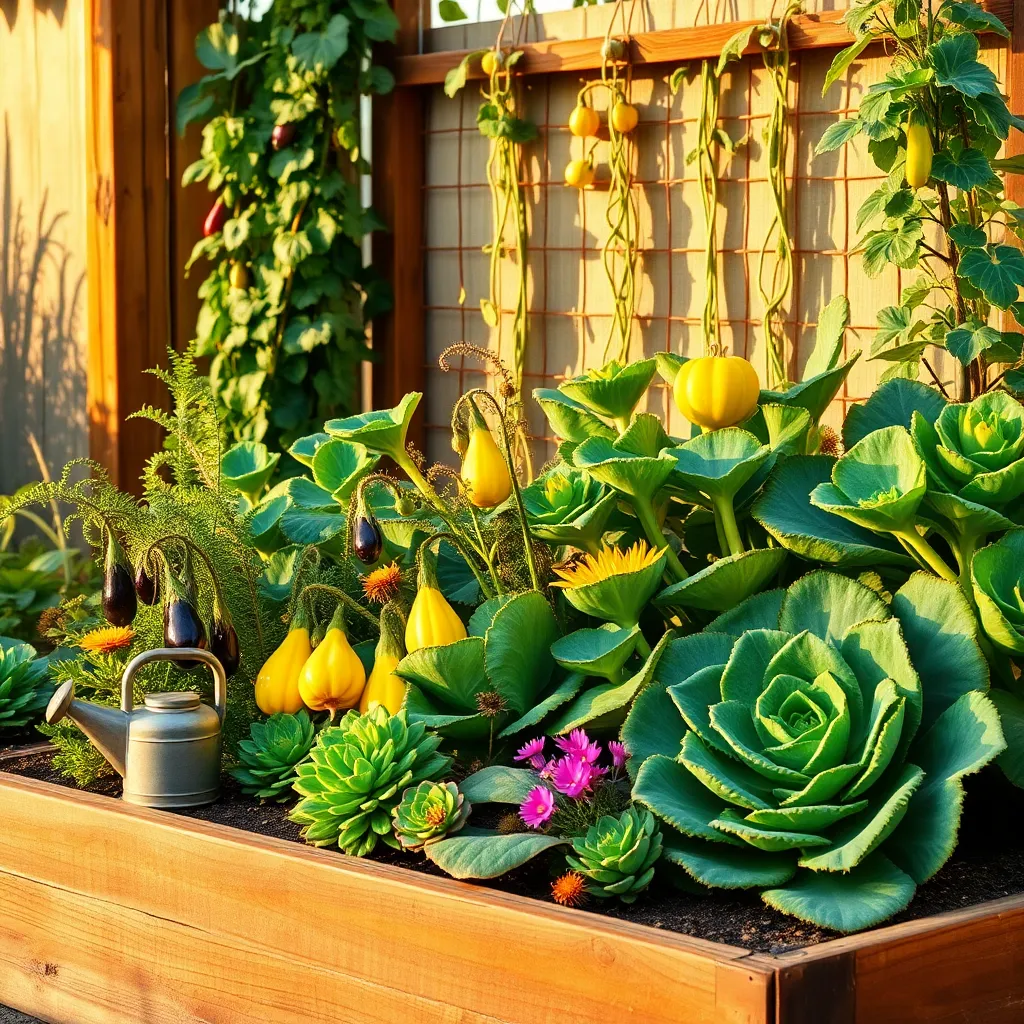
Choosing drought-resistant varieties can significantly reduce the time and effort needed to maintain your vegetable garden. Many of these plants have adaptations that allow them to thrive with less water, making them ideal for low-maintenance gardening.
Consider planting vegetables like cherry tomatoes, zucchini, and kale, which are known for their drought tolerance. These plants have deep root systems or waxy leaves that help them conserve water and survive in dry conditions.
For optimal growth, it’s important to plant these varieties in well-draining soil that retains moisture, such as sandy loam mixed with organic matter. Incorporating mulch around the plants will help keep the soil temperature stable and reduce water evaporation, ensuring the plants have consistent access to moisture.
Advanced gardeners might experiment with techniques like drip irrigation, which delivers water directly to the roots and minimizes waste. This method not only conserves water but also reduces the likelihood of fungal diseases by keeping foliage dry.
Implement Drip Irrigation Systems
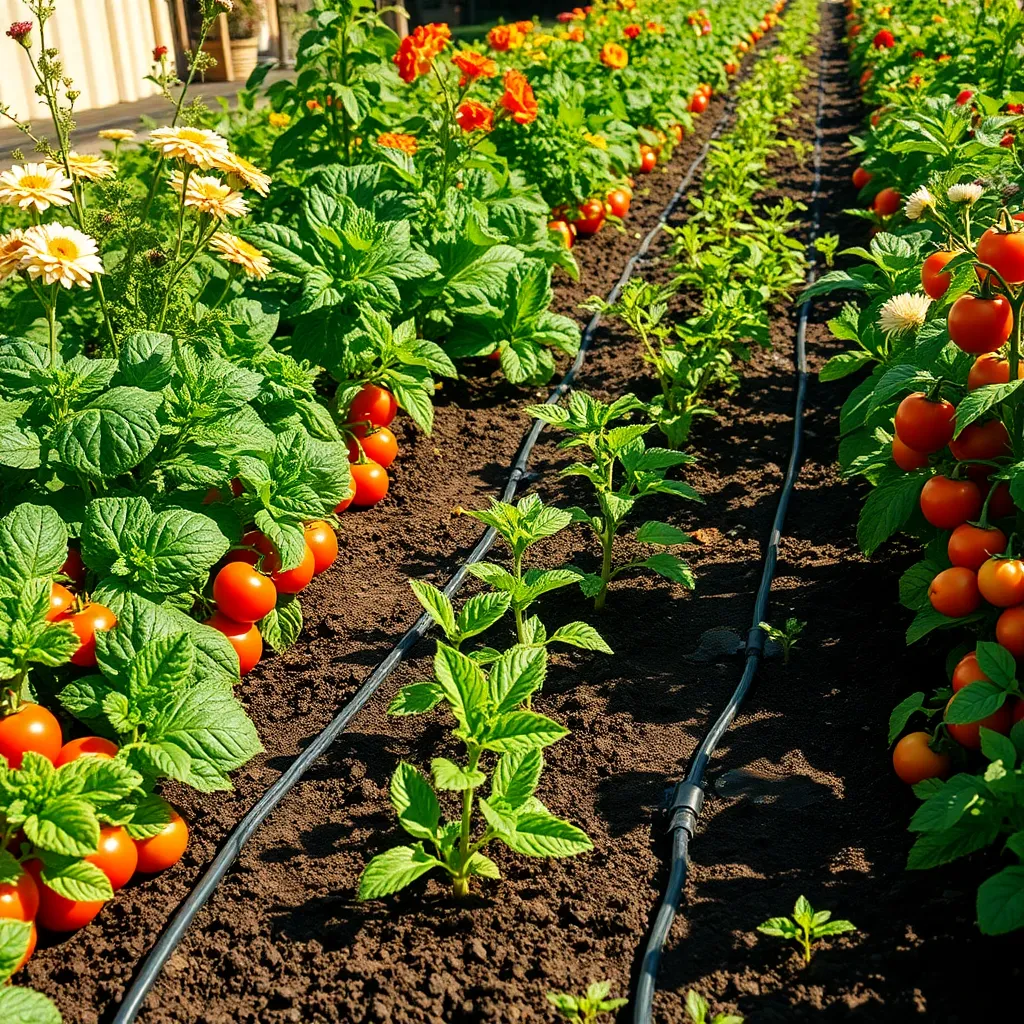
Implementing a drip irrigation system is an excellent way to ensure your vegetable garden receives consistent moisture with minimal effort. This method not only conserves water but also directs it precisely to the roots of your plants, reducing evaporation.
Begin by selecting a drip irrigation kit suitable for your garden size, which typically includes tubing, emitters, and connectors. Install the system by laying the main tubing along rows of plants and attaching emitters near the base of each plant for targeted watering.
For optimal performance, position the emitters to provide about one inch of water per week, adjusting more frequently during hot, dry spells. Regularly check the system for clogs or leaks, which can disrupt water flow and reduce efficiency.
Advanced gardeners can automate their drip systems with a timer, ensuring consistent watering even when away. This setup allows for precise control over watering schedules, promoting healthier plant growth and preventing overwatering.
Utilize Mulch to Retain Moisture

Using mulch is an effective strategy to retain moisture in your vegetable garden, making it ideal for gardeners seeking low-maintenance solutions. By covering the soil surface with organic materials such as straw, wood chips, or shredded leaves, you reduce evaporation and help maintain consistent soil moisture levels.
Applying mulch not only conserves water but also suppresses weed growth, reducing competition for nutrients with your vegetable plants. For best results, spread a layer of about 2 to 4 inches of mulch around your plants, ensuring not to pile it directly against stems to prevent rot.
Organic mulches gradually break down, adding valuable nutrients to the soil and improving its structure over time. This natural process benefits plants like tomatoes and peppers, which thrive in well-aerated, nutrient-rich soil.
For those in drier climates, consider using a heavier mulch like bark nuggets, which decomposes slowly and provides a long-lasting moisture barrier. Regularly check the mulch layer to ensure it remains at an optimal thickness, as wind and weather can displace it over time.
Plant Perennial Vegetables
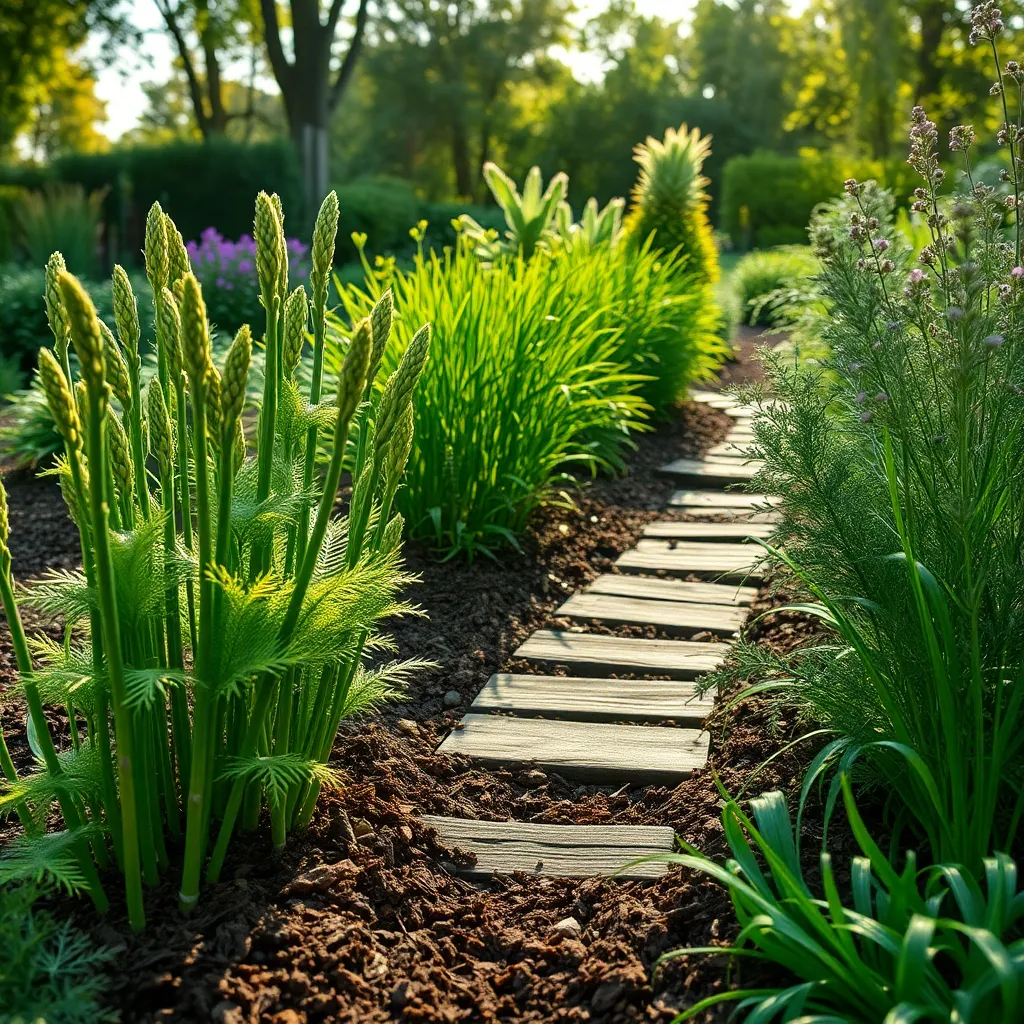
Perennial vegetables are an excellent choice for a low-maintenance garden, providing harvests year after year with minimal effort. Asparagus and rhubarb are two popular options that thrive in well-drained soil with plenty of organic matter.
Start by preparing your soil with compost to ensure a rich growth environment. Once planted, these perennials require little more than regular watering—typically once a week—especially during dry spells.
For beginners, asparagus can be grown from crowns planted in early spring, while more advanced gardeners might try growing them from seed. Rhubarb thrives in full sun but can tolerate partial shade, making it versatile for various garden spots.
Ensure to mulch around these plants to retain moisture and suppress weeds, a technique already discussed for its benefits in your garden. With simple seasonal maintenance such as cutting back in the fall, these plants will reward you with a bountiful harvest for many years.
Group Plants by Water Needs
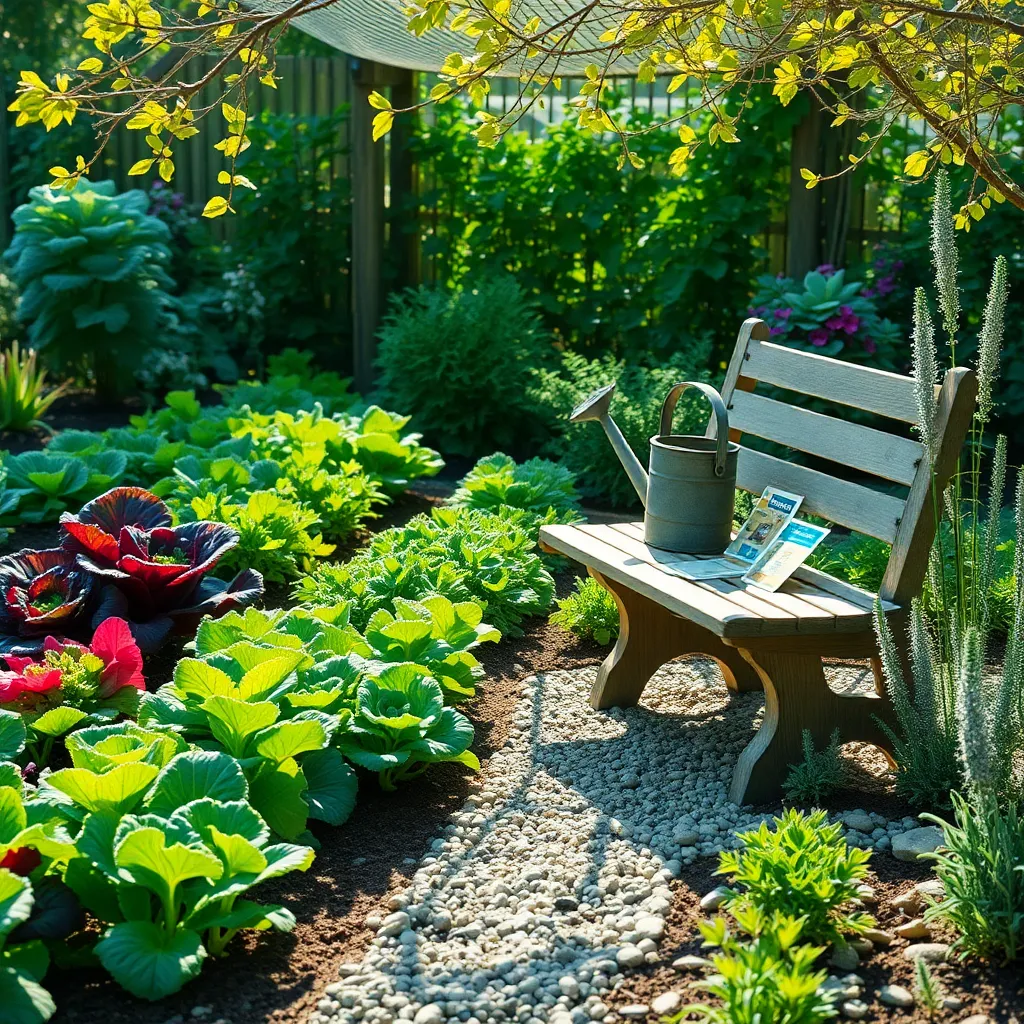
Grouping plants by water needs is a simple yet effective strategy for a low-maintenance vegetable garden. By doing so, you ensure that each plant receives the appropriate amount of moisture, which helps them thrive and reduces water waste.
Start by identifying plants with similar water requirements and place them together. For example, lettuce, spinach, and other leafy greens prefer consistently moist soil, whereas tomatoes and peppers do well with less frequent watering.
Aim to water deeply but less often for plants that prefer drier conditions, such as rosemary and thyme. This encourages deeper root growth and enhances drought resistance, making your garden more resilient and easier to maintain.
For gardens with mixed water needs, consider using a drip irrigation system. This allows you to tailor the water delivery to specific plant groupings, ensuring each gets the right amount of moisture without excess.
Advanced gardeners might experiment with mulching techniques to retain soil moisture and reduce watering frequency. Organic mulches like straw or shredded leaves can be particularly effective for water conservation and weed suppression.
Incorporate Companion Planting Strategies
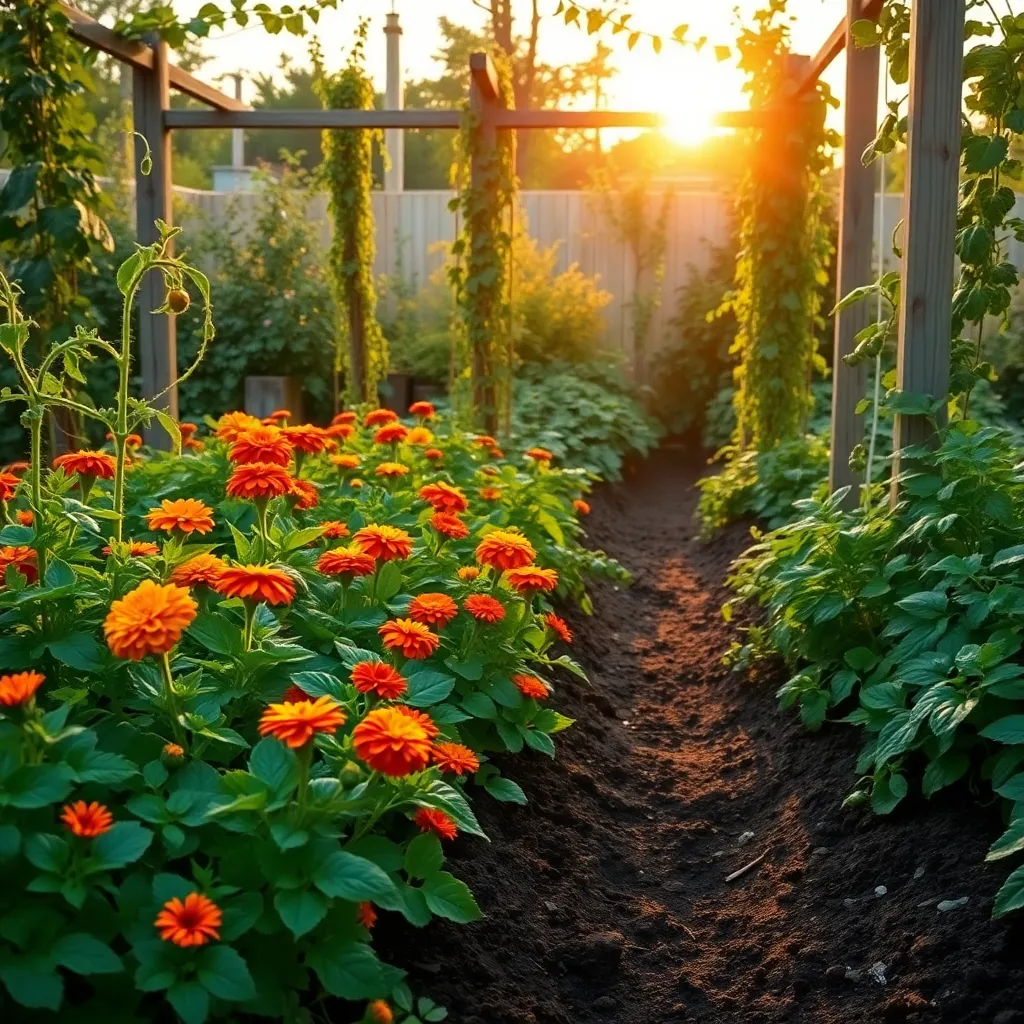
Companion planting is a strategic way to enhance your vegetable garden by pairing plants that benefit each other. For example, placing tomatoes next to basil can improve the growth and flavor of both plants, while also repelling pests like aphids and tomato hornworms.
To maximize the benefits of companion planting, consider the specific needs and characteristics of your chosen plants. For instance, carrots and onions make excellent companions, as carrots deter onion flies while onions repel carrot rust flies, creating a mutual protective barrier.
For beginners, starting with classic companion pairs can simplify the learning curve. Try planting marigolds among your vegetables; they are known to repel nematodes and attract beneficial insects, making them a great ally for many plants.
Experienced gardeners can experiment with more advanced combinations to optimize growth and yield. Consider interplanting corn, beans, and squash, a technique known as the “Three Sisters” method, where each plant supports the others through shared resources and protection.
Use Self-Watering Planters
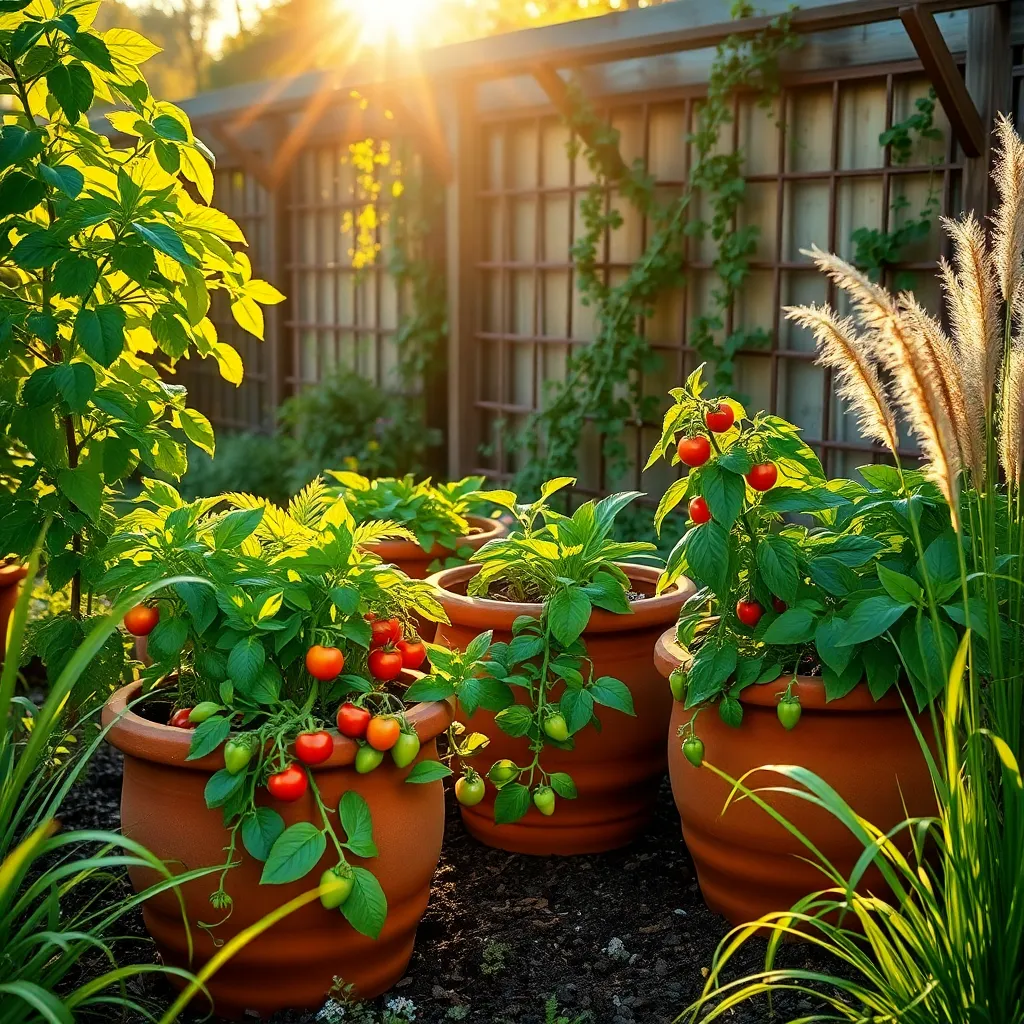
Consider using self-watering planters to simplify your vegetable gardening routine. These planters are designed to provide a consistent supply of moisture, which is particularly beneficial if you have a busy schedule or often forget to water your plants.
To start, fill the reservoir at the base of the planter with water, ensuring it can last several days or even a week. This system allows the soil to draw up water as needed through capillary action, reducing the risk of overwatering or underwatering.
Choose a high-quality potting mix that retains moisture well, such as one containing peat moss or coconut coir. This type of soil will complement the self-watering system by ensuring that moisture is evenly distributed throughout the planter.
For those growing plants like tomatoes or peppers, self-watering planters are particularly advantageous due to these plants’ high moisture needs. Monitor the water level indicator regularly to ensure the reservoir doesn’t dry out, especially during hot weather.
Practice No-Dig Gardening Methods
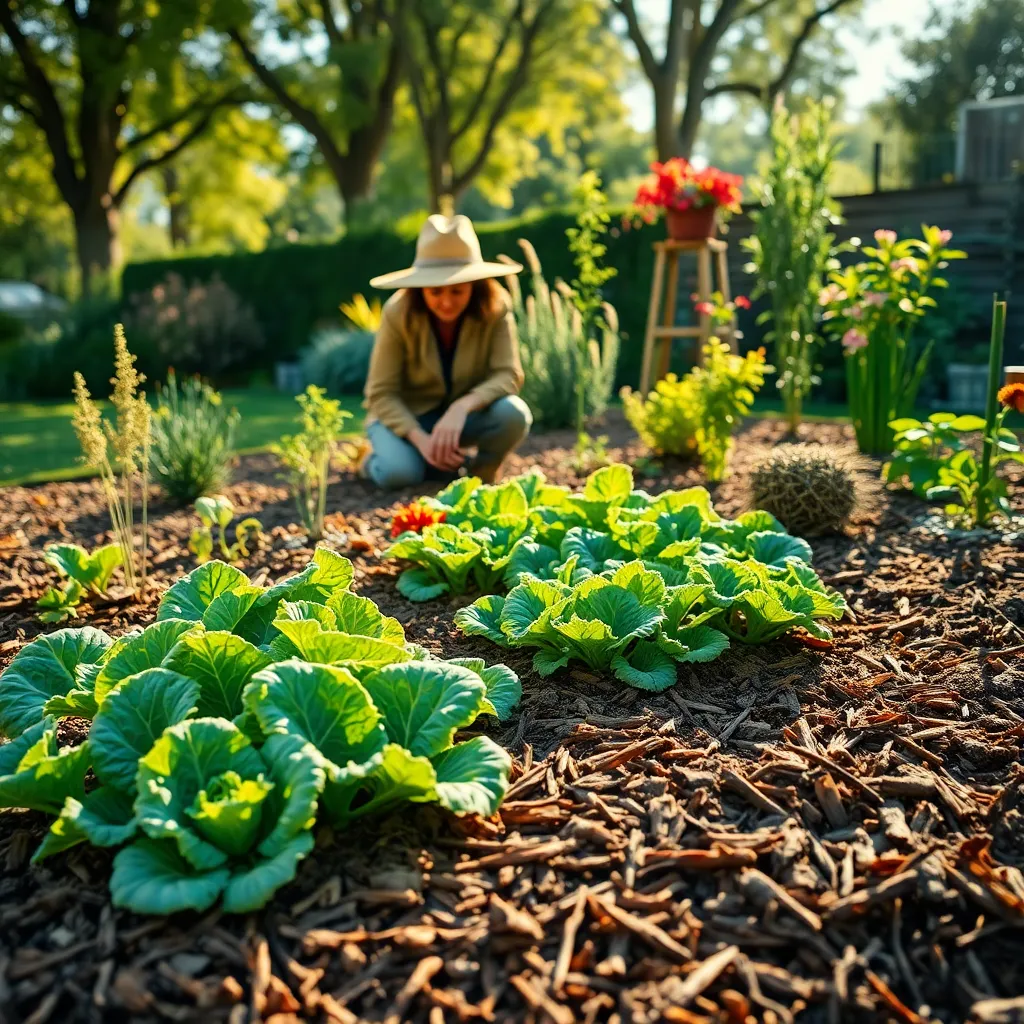
No-dig gardening is a fantastic method for those looking to reduce their workload while improving soil health. By layering organic materials such as straw, compost, and aged manure directly onto the soil, you can create a rich, fertile environment without the need for heavy tilling.
To start a no-dig garden, lay down a thick layer of cardboard or newspaper to suppress weeds. Then, alternate layers of compost and mulch to build nutrient-rich beds that will nurture your plants as they grow.
Watering is crucial in no-dig gardens, especially during dry spells, as the layered organic matter can dry out quickly. Ensure consistent moisture by installing a drip irrigation system or watering deeply every few days.
For beginners, planting easy-to-grow vegetables like lettuce, radishes, and beans will give quick, rewarding results. More experienced gardeners might experiment with crop rotation, using the no-dig method to maintain soil fertility and structure over multiple growing seasons.
Apply Organic Pest Control Solutions
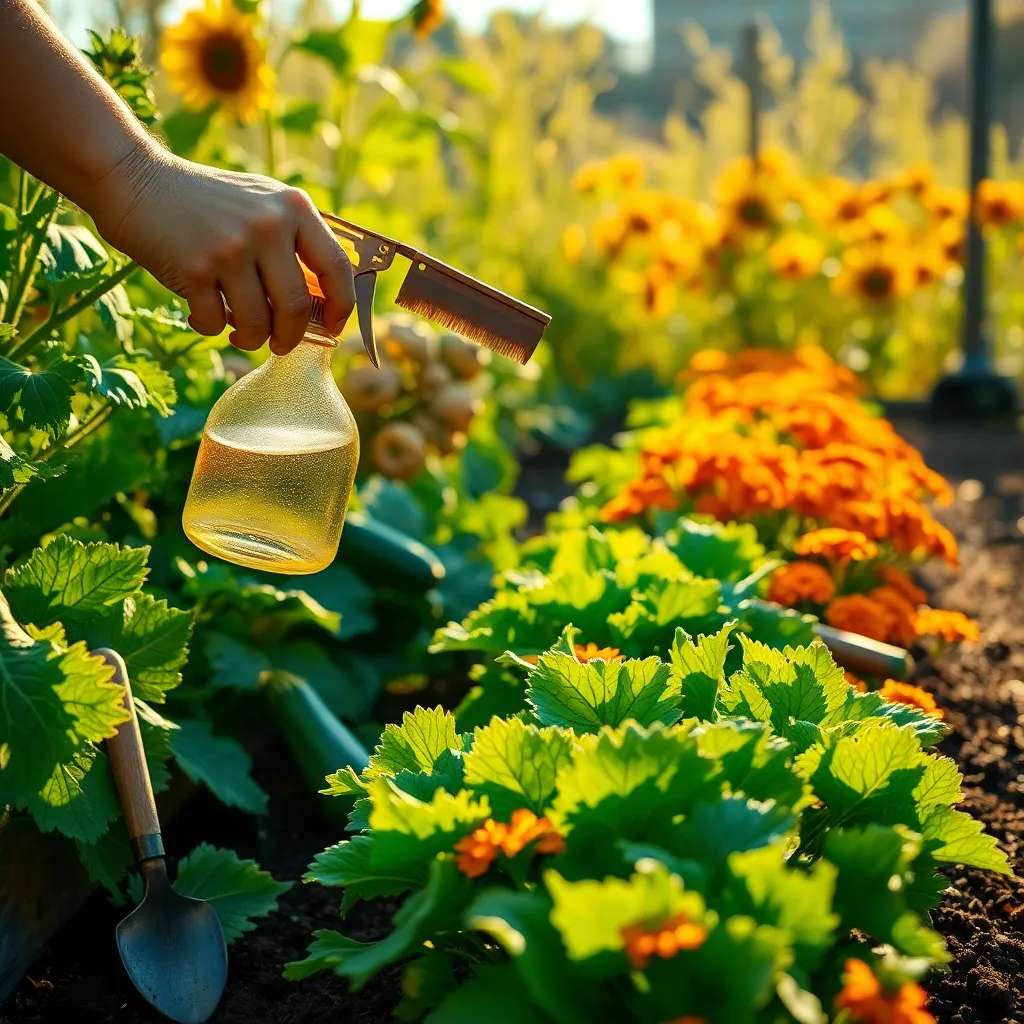
Embracing organic pest control solutions can significantly reduce the maintenance needs of your vegetable garden. One effective method is introducing beneficial insects such as ladybugs and lacewings, which naturally reduce aphid populations without harmful chemicals.
Another practical approach is to use homemade sprays made from natural ingredients like neem oil or garlic. These sprays can be applied directly to the leaves and stems of plants, effectively repelling pests while being safe for the environment.
For a more advanced tip, creating a diverse garden ecosystem can discourage pest infestations. Planting a variety of herbs such as basil, mint, and chives alongside vegetables can confuse pests with their strong scents and deter them from settling.
Additionally, consider using physical barriers like floating row covers to protect young plants from insects. These lightweight fabrics allow sunlight and water through but keep pests out, providing an extra layer of defense with minimal effort.
Schedule Regular but Minimal Maintenance
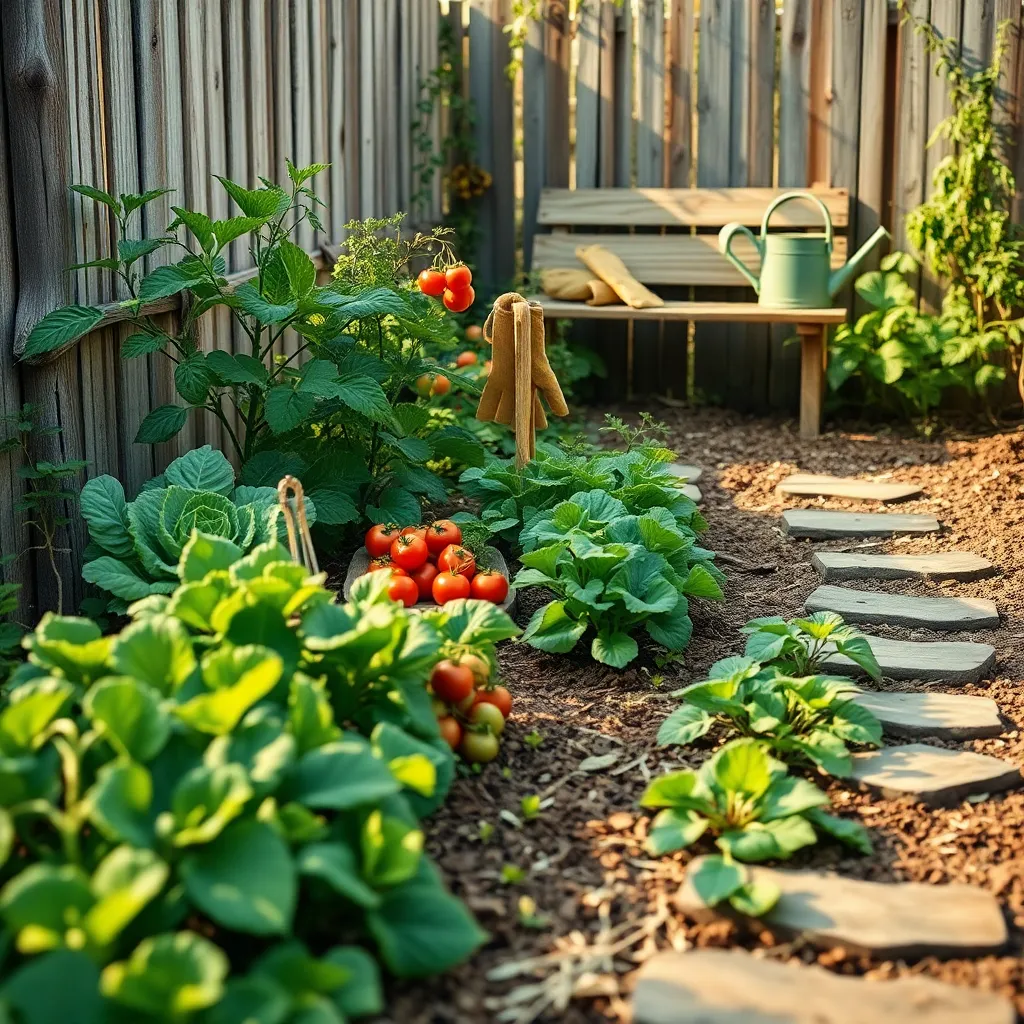
Regular maintenance is crucial for a thriving vegetable garden, but it doesn’t have to be overwhelming. By setting aside just a few minutes each week, you can effectively manage your garden’s needs without significant effort.
Start by establishing a simple routine that includes basic tasks like checking soil moisture levels and removing weeds. Aim to water deeply but infrequently, allowing the soil to dry slightly between waterings to encourage deeper root growth.
Consider using mulch to minimize weed growth and retain soil moisture, reducing the need for frequent watering. Organic mulches, such as straw or shredded leaves, not only suppress weeds but also gradually enrich the soil as they decompose.
As a more advanced tip, practice crop rotation to prevent soil depletion and reduce pest buildup. Rotate crops annually based on their plant family, ensuring that the same type of plant isn’t grown in the same spot consecutively.
Conclusion: Growing Success with These Plants
As we conclude our exploration of ’11 Low-Maintenance Vegetable Garden Ideas,’ let’s revisit the core relationship concepts that can help cultivate a thriving partnership. We’ve discussed the importance of setting realistic expectations, embracing flexibility, and fostering open communication—all essential for any low-maintenance garden or relationship. We also covered how building trust, sharing responsibilities, and nurturing mutual interests can strengthen your bond, much like tending to a garden. Just as a garden benefits from regular care, so too does your relationship from quality time and appreciation.
Now, take a moment to reflect on one of these ideas and implement it in your relationship today. Whether it’s setting aside a weekly date night or developing a new shared hobby, taking one small step can yield significant growth.
Remember, nurturing a relationship is an ongoing journey. Bookmark this article to revisit these insights whenever you need a gentle reminder. As you continue to invest in your relationship, envision a future where both you and your partner flourish together. By embedding these principles into your daily life, you’re not just maintaining a relationship—you’re watching it bloom.

